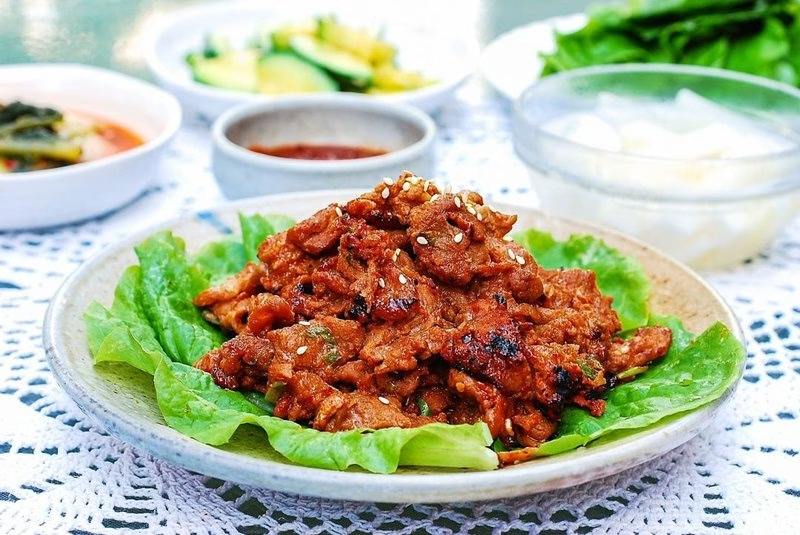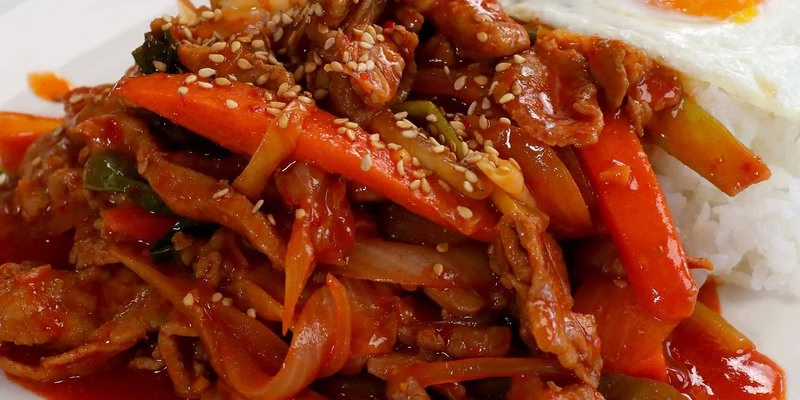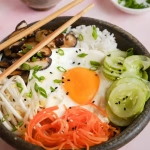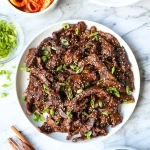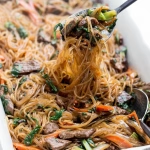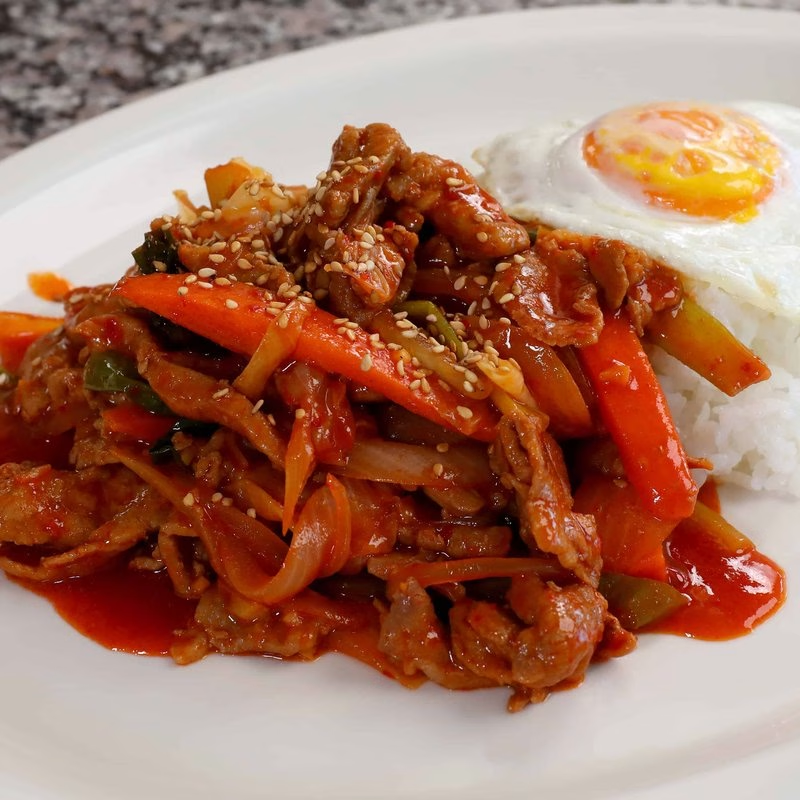
Introduction
Jeyuk Bokkeumbap is a beloved dish that brings the vibrant flavors of Korea right to your table. This spicy, savory fried rice, made with marinated pork, is a perfect balance of spices, vegetables, and textures. Originating from the bustling streets of Seoul, Jeyuk Bokkeumbap has gained immense popularity not just in Korea but also around the globe. Its unique combination of flavors makes it a satisfying meal that can be enjoyed any time of the day, whether for breakfast, lunch, or dinner.
In this article, you’ll learn how to create authentic Jeyuk Bokkeumbap right in the comfort of your own kitchen. We’ll cover the essential ingredients, step-by-step instructions, pro tips for perfecting the dish, and answers to some frequently asked questions. Get ready to impress your family and friends with this delightful dish that’s sure to awaken your taste buds!
Ingredients
Here’s a look at the ingredients you’ll need to prepare a flavorful Jeyuk Bokkeumbap.
| Ingredient | Measurement | Description |
| Pork Shoulder | 1 pound | The star of Jeyuk Bokkeumbap, pork shoulder is tender and flavorful when marinated correctly. |
| Cooked Rice | 4 cups | Day-old rice works best as it’s drier and prevents sogginess in your fried rice. |
| Kimchi | 1 cup, chopped | This fermented vegetable side adds tang and spice, enhancing the overall flavor profile. |
| Carrot | 1, julienned | Adds sweetness and a pop of color to your dish, making it visually appealing. |
| Green Onions | 3, chopped | These provide a fresh crunch and are essential for garnishing. |
| Garlic | 4 cloves, minced | Fresh garlic enhances the aroma and depth of flavor in Jeyuk Bokkeumbap. |
| Vegetable Oil | 2 tablespoons | Used for frying, it adds a subtle richness to the dish. |
| Jeyuk Bokkeumbap Sauce | 3 tablespoons (Gochujang, soy sauce, sesame oil) | This homemade Jeyuk Bokkeumbap sauce combines spicy and savory elements, perfectly complementing the pork. |
| Sesame Seeds | For garnish | Adds a nutty flavor and crunch, perfect for finishing your dish. |
Step-by-Step Instructions
Ready to dive into cooking? Here’s how to make Jeyuk Bokkeumbap at home.
- Prepare the Marinade: In a bowl, combine sliced pork shoulder with gochujang, soy sauce, sesame oil, minced garlic, and a touch of sugar. Let it marinate for at least 30 minutes. This step is crucial for infusing flavors.
- Cook the Pork: Heat 1 tablespoon of vegetable oil in a large pan over medium heat. Add the marinated pork and cook until browned and fully cooked through, about 5-7 minutes. The aroma will be amazing!
- Sauté the Vegetables: In the same pan, push the cooked pork to one side, add another tablespoon of oil, and sauté the chopped onions, carrots, and kimchi until the vegetables are tender, about 3-4 minutes.
- Add the Rice: Stir in the cooked rice, breaking up any clumps. Mix everything together, ensuring that the rice absorbs all those delicious flavors from the pan.
- Season and Serve: Drizzle the Jeyuk Bokkeumbap sauce over the rice and stir well to combine. Once heated through, serve hot, garnished with chopped green onions and sesame seeds.
Pro Tips
– **Use Day-Old Rice:** Freshly cooked rice can be too sticky and clump. Day-old rice, on the other hand, is drier and makes for the best Jeyuk Bokkeumbap.
– **Don’t Skip the Marinade:** Marinating the pork not only adds depth of flavor but also tenderizes the meat. If you have time, marinate it overnight!
– **Adjust the Spice Level:** If you’re not a fan of too much heat, reduce the amount of gochujang or pair your Jeyuk Bokkeumbap with a cooling side like a cucumber salad.
– **Mix and Match Vegetables:** Feel free to add other vegetables like bell peppers, peas, or even mushrooms to suit your taste and increase the nutritional value.
– **Make it Your Own:** You can add an egg on top and fry it sunny-side up for added richness.
Nutritional Information
Here’s a quick breakdown of the nutritional information per serving of Jeyuk Bokkeumbap (based on 4 servings):
| Nutrient | Amount |
| Calories | 500 |
| Protein | 24g |
| Carbohydrates | 70g |
| Saturated Fat | 3g |
| Fiber | 3g |
| Cholesterol | 70mg |
| Sugars | 4g |
| Fats | 15g |
FAQs
– What is the best way to store Jeyuk Bokkeumbap?
Store any leftovers in an airtight container in the fridge for up to 3 days. Reheat in a pan or microwave before serving.
– Can Jeyuk Bokkeumbap be made vegan or gluten-free?
Absolutely! Substitute pork with tofu or tempeh and use gluten-free soy sauce to make it suitable for vegans and those with gluten intolerance.
– What are the best side dishes to serve with Jeyuk Bokkeumbap?
Pair it with a side of pickled vegetables, Korean cucumber salad, or even a simple soup to balance the meal.
– How long does it take to prepare Jeyuk Bokkeumbap?
The total time can be around 1 hour, including marinating the pork. If you skip the marinating, it can be done in about 30 minutes.
– Can I freeze Jeyuk Bokkeumbap for later?
Yes! Cool it completely, then store in a freezer-safe container. It can be frozen for up to 2 months. Thaw overnight in the fridge before reheating.
– What type of rice is best for Jeyuk Bokkeumbap?
Short-grain rice or medium-grain rice works best to achieve that chewy texture typical of Korean fried rice.
– Can I add other proteins to Jeyuk Bokkeumbap?
Yes! Chicken, shrimp, or even beef can be easily swapped in, just adjust cooking times accordingly.
– How spicy is Jeyuk Bokkeumbap?
The heat largely depends on the amount of gochujang used. Adjust it to your preference for a milder or spicier dish!
Making Jeyuk Bokkeumbap at home is not just a cooking project; it’s an adventure into the rich tapestry of Korean cuisine. With its robust flavors and comforting texture, this dish is sure to become a favorite in your household. Don’t forget to experiment with the spices and ingredients to make it your own.
Now it’s your turn! Try this Jeyuk Bokkeumbap recipe and share your experience in the comments. We’d love to hear how it turned out and any tips you might have for fellow home cooks!
